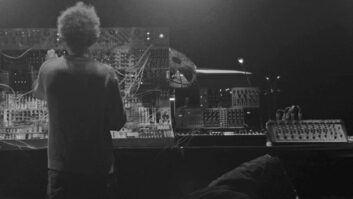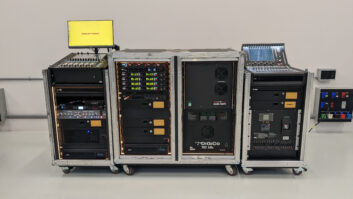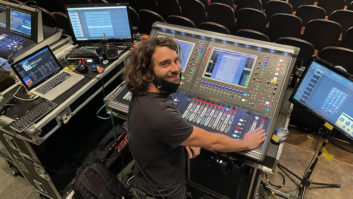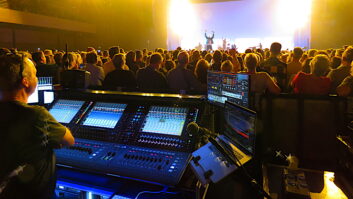About five years ago, every manufacturer seemed to be releasing compact consoles, whether in rack or surface form. The advantages of network and stage box connectivity, with remote tablet control, made the powerful units ideal for corporate, installation, houses of worship, clubs and countless other applications.
In the ensuing years, we’ve seen a flood of firmware and software updates to increase efficiency, add features, boost integration and integrate simplified multitrack recording features. Here are a few of the more recent updates from some of the leaders in the field of compact consoles for live sound applications.
Allen & Heath 96 kHz SQ Mixer Series
The flagship in the line, the SQ-7, got a lot of attention this fall, though it’s not all that compact. The bigger news, perhaps, is that the company recently released the SQ-5 and SQ-6, incorporating the same stunningly powerful XCVI 96 kHz FPGA engine with a latency of less than 0.7 ms. SQ-5 has 16 onboard preamps and 17 faders and is 19-inch rack mountable, while the SQ-6 provides 24 preamps and 25 faders. Both consoles can be expanded up to 48 inputs via a family of remote expanders and feature an audio networking slot for optional Dante, Waves and other card formats. The recent SQ firmware V1.3 adds a Listen bus, enabling the engineer to patch PAFL to an IEM system, stereo nearfield monitors or a mono listen wedge, with the option to control the Listen level with the master fader. The addition of an External Input to PAFL is also expected to improve communication between FOH and monitor engineers. The update also includes changes that make use of the company’s new SLink card, aiding FOH/monitor splits and remote I/O, or combinations of either of these with a ME personal monitoring system.
DiGiCo S31, Plus SD Updates
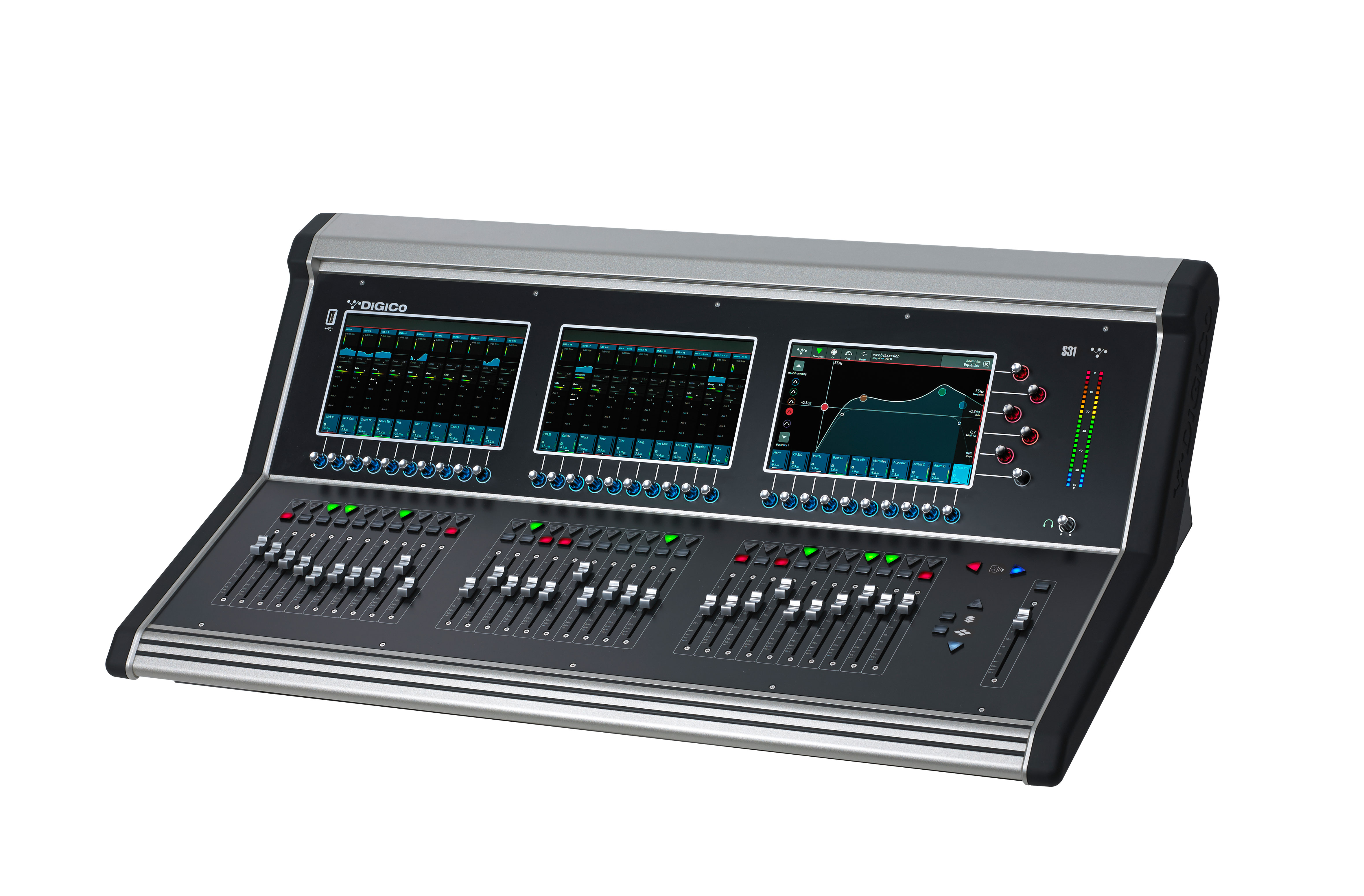
The top-end SD line is now strong and wide, and last year saw the introduction of the flagship Quantum 7, along with upgrades up and down the SD line and the addition of further integration with Waves through Wave External. A little more than a year ago, the company made a major update to its more compact S line with the release of the S31. The S31 features three 10-inch, multitouch touch screens with ten channel strips per screen. A newly designed drag, swipe and drop channel layout system makes it simple for operators to move channels and buses across the surface to design their own custom fader layouts. The S31 includes 24 mic inputs and 12 line outputs on the rear of the console, to go with two DMI ports as standard, as well as a UB MADI interface for DAW recording. The latest DMI-MIC card offers an additional eight mic preamps, so any S Series console can be beefed up to a total of 40 mic inputs directly on the console surface.
Mackie DL Series Wireless Mixers

Last summer, Mackie released two all-new DL Series digital mixers—the 16-channel DL16S and 32-channel DL32S wireless digital mixers with built-in Wi-Fi, Master Fader multi-platform control, and the company’s Built-Like-A-Tank stagebox form factor. Each includes the company’s Onyx+ mic preamps and fully loaded DSP on each input and output, plus four FX processors. A new suite of FX such as chorus, flanger, rotary, auto-filter and more are included. The consoles feature full multitrack recording via USB, with playback into each channel for an easy virtual soundcheck.
Master Fader 5.0 has been re-engineered from the ground up with the addition of multi-platform support on Android, with Mac and PC support coming in version 5.1.
Peavey Unity DR16
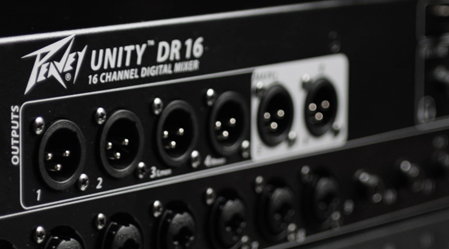
Okay, it’s been almost two years since Peavey released Unity DR16, the first entry in its new series of digital mixer products and the first of its kind to be fully expandable. But it didn’t seem to get the attention it deserved. In its standard configuration, the Unity DR16 offers 16 inputs, with eight of those boasting Peavey’s world-class Silencer mic preamps. All the input EQs have the Classic Peavey Mid-Morph EQ. All DR16 outputs feature a parametric EQ, a 31-band graphic EQ in cascade and an automatic feedback eliminator. It allows for selectable monitor sources, as well as the ability to leverage Aux 3/4 as stereo or mono monitor sends.
The Unity DR16 features a unique mixed network configuration of up to ten Ethernet and four Wi-Fi connections at the same time, allowing users to adjust the console from the stage or live room via the Peavey Unity Mix app iOS app (Android coming soon). An Extension Card provides the option to make input channels 13 through 16 analog unbalanced/balanced inputs, S/PDIF or Dante, with other options to come. An Expansion Card can be used to add 12 input channels for every connected DR16.
PreSonus StudioLive Series III Version 1.9
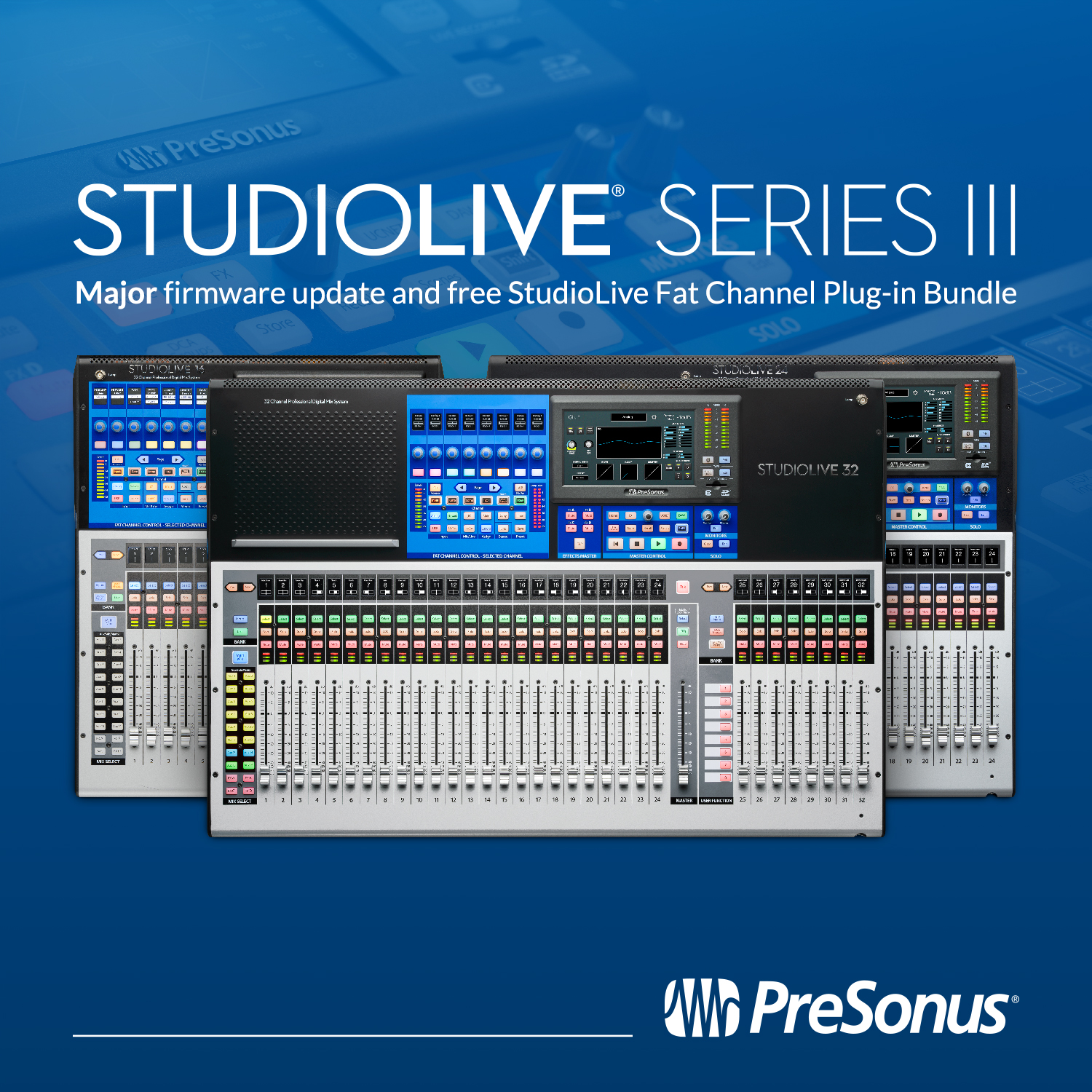
Over the past decade, few companies have developed as comprehensive an approach to studio-live production integration as PreSonus through its StudioOne DAW, StudioLive consoles, stage boxes, plug-ins and range of connectivity and production tools, not to mention its speakers, also for studio and live. The StudioLive Series has been out for a bit now, but it keeps getting better. It can see up to 40 inputs, with 32 rear-panel XLR jacks, all of which feature XMAX preamps and half of them adding 1/4-inch balanced line-level options via combo jacks. Going digital, the mixer can be integrated into an AVB network or can act as a 40 x 40 USB 2.0 interface at a fixed sample rate of 48 kHz, so a DAW return can be selected as the input for any given mixer channel. The recent version 1.9 firmware update features enhanced support for PreSonus AVB networked products, including the EarMix 16M and NSB-series stage boxes, as well as improved mixer performance. And, for a limited time, users of StudioLive Series III consoles and rack mixers can download for free the company’s Vintage Channel Strips Bundle of Fat Channel plug-ins.
Solid State Logic Remote Tile, V4.7 Updates
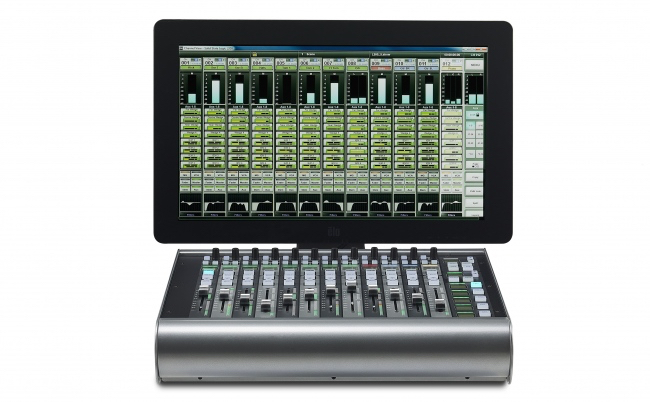
Last spring, the same time that SSL introduced new V4.7 software throughout its SL line of high-end consoles, it also quietly announced the release of the Remote Tile hardware expansion fader unit. The SSL Remote Tile offers users an extra 12 faders to use with any SSL Live console, or with a PC running the SSL SOLSA control and configuration application. Like SSL Live consoles, the Remote Tile sports touch-sensitive 100mm motorized faders. Additionally, it offers solo/mute, Query and Select buttons, quick controls, individual channel LCD displays and a complete set of tile navigation buttons. Up to two Remote Tiles (24 faders total) can be connected to any SSL Live console or SOLSA PC via USB, which is a pretty cool way to add channels or work on tracks. Meanwhile, the V4.7 software augments TaCo—the SSL Live Tablet Control system for Apple and Android tablets. The TaCo app’s Engineer Mode now provides parameter control of all path processing (EQ, dynamics, panning, delay, all-pass filter) and all FX in the console’s internal FX rack.
Soundcraft Ui24R
The Soundcraft Ui24R is also a little more than a year old, but it deserves attention. As a complete, rack-mountable, digital mixing and multitrack recording system, it includes flexible I/O, the full range of Harman’s developments across multiple industries, pristine sound quality, wireless control and roadworthy reliability. It can double as a stagebox and can be controlled by up to 10 devices via Ethernet or built-in dual-band Wi-Fi, making it possible to control mixing and multi-track recording wirelessly from anywhere in the venue. It includes iconic Lexicon reverbs, choruses, delays, dbx compression, dbx AFS2 automatic feedback suppression on all monitor outputs, DigiTech guitar amp modeling, Studer-designed preamps and much more. The rear panel includes ten combo 1/4-inch TRS/XLR, ten XLR, two line level inputs and two channels of digital USB playback for a total of 24 channels.
TASCAM Model 24
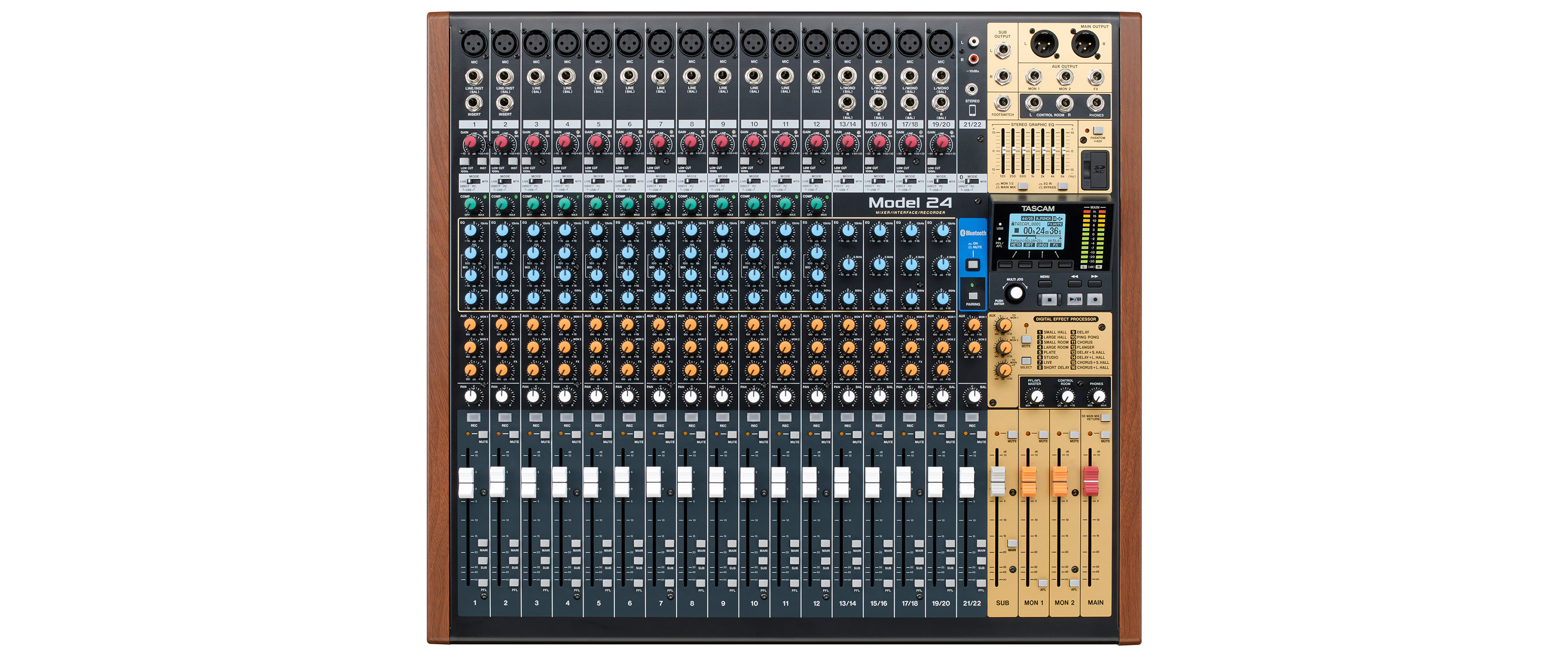
The new Model 24 handles the functions of three different pieces of hardware in one—mixer, multitrack recorder and USB audio interface—and, like its Portastudio predecessor, it straddles the worlds of studio and stage. As a mixer, it provides 22 input channels with 100mm faders. Twelve of the channels are mono, and five are stereo. You get 16 XLR inputs (you can use all but one of the stereo channels as mono inputs), 12 1/4-inch balanced mono line inputs and four stereo pairs of 1/4-inch line inputs. Each channel has a one-knob compressor that can be used for input only. Channel EQ consists of single controls for the low and high bands, and frequency and boost/cut for the midrange. The Model 24 can also record 24 tracks directly to an SD card at up to 24-bit/48 kHz quality. It even streams audio from your phone or other Bluetooth device, which is handy for playing break music at gigs or for listening to songs you’re learning at a rehearsal. Considering its versatility, the unit is pretty compact, with dimensions of roughly 22 inches W x 20 inches D x 4 inches H. At 22 pounds, it’s relatively lightweight, too.
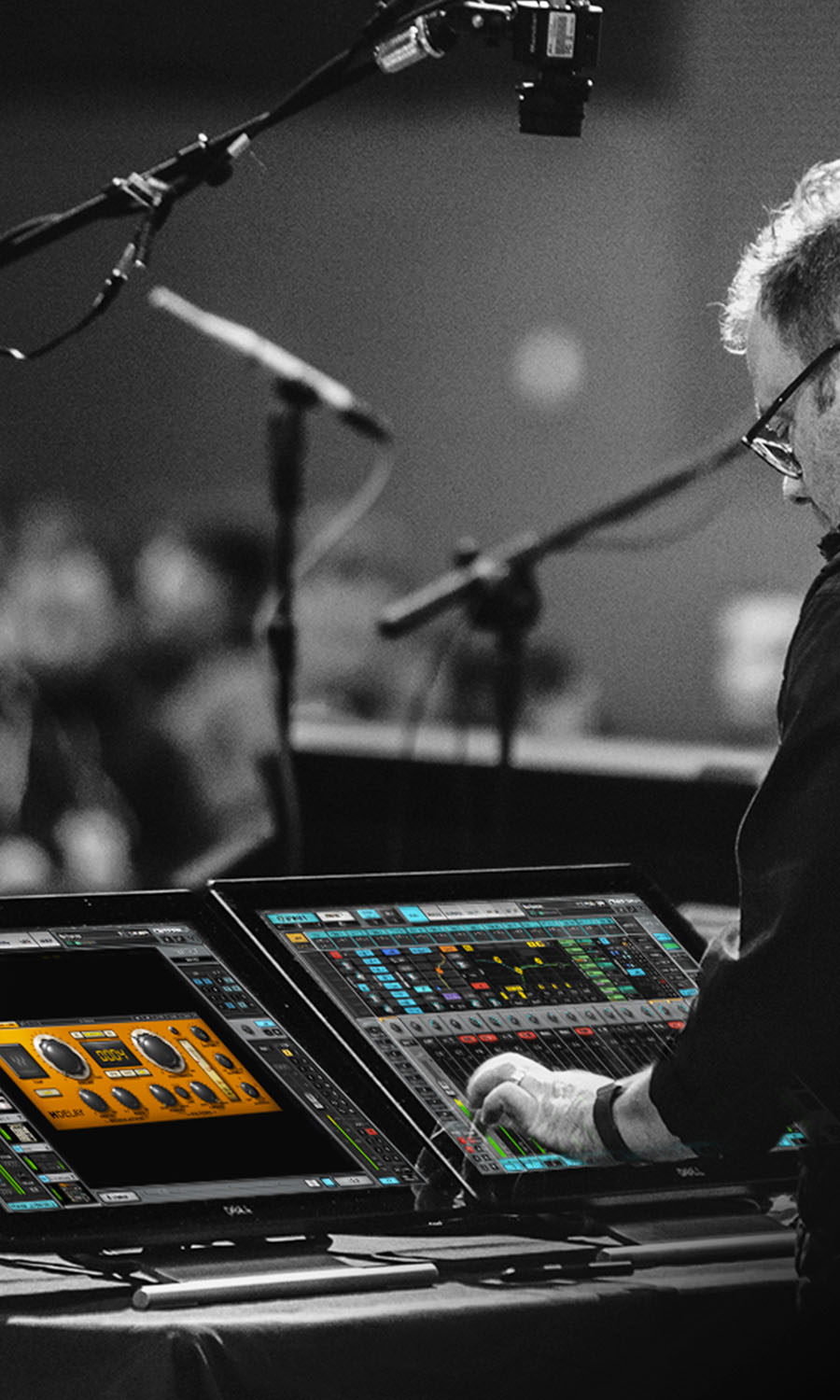
Waves eMotion LV1, Version 10 Updates
This powerful, somewhat non-traditional front-of-house, monitor and broadcast console system has been updated to V10 with new features that include I/O sharing with separate gain control for each engineer and shared preamp control with automatic individual gain compensation. Based on Waves SoundGrid technology, each of the mixer’s channels has its own plug-in rack that is capable of running up to eight Waves and third-party plug-ins. V10 I/O sharing introduces both shared and separate gain control modes, enabling engineers to set their nominal input levels safely and conveniently without affecting each other. The mixer’s channel strip is provided by Waves eMo plugins: eMo D5 Dynamics, eMo F2 Filter and eMo Q4 Equalizer. The LV1 also integrates smoothly with the Dugan Speech and Dugan Automixer plugins (purchased separately), which are easily accessible from each LV1 channel.
Yamaha TF Series Digital Mixers, V3.5
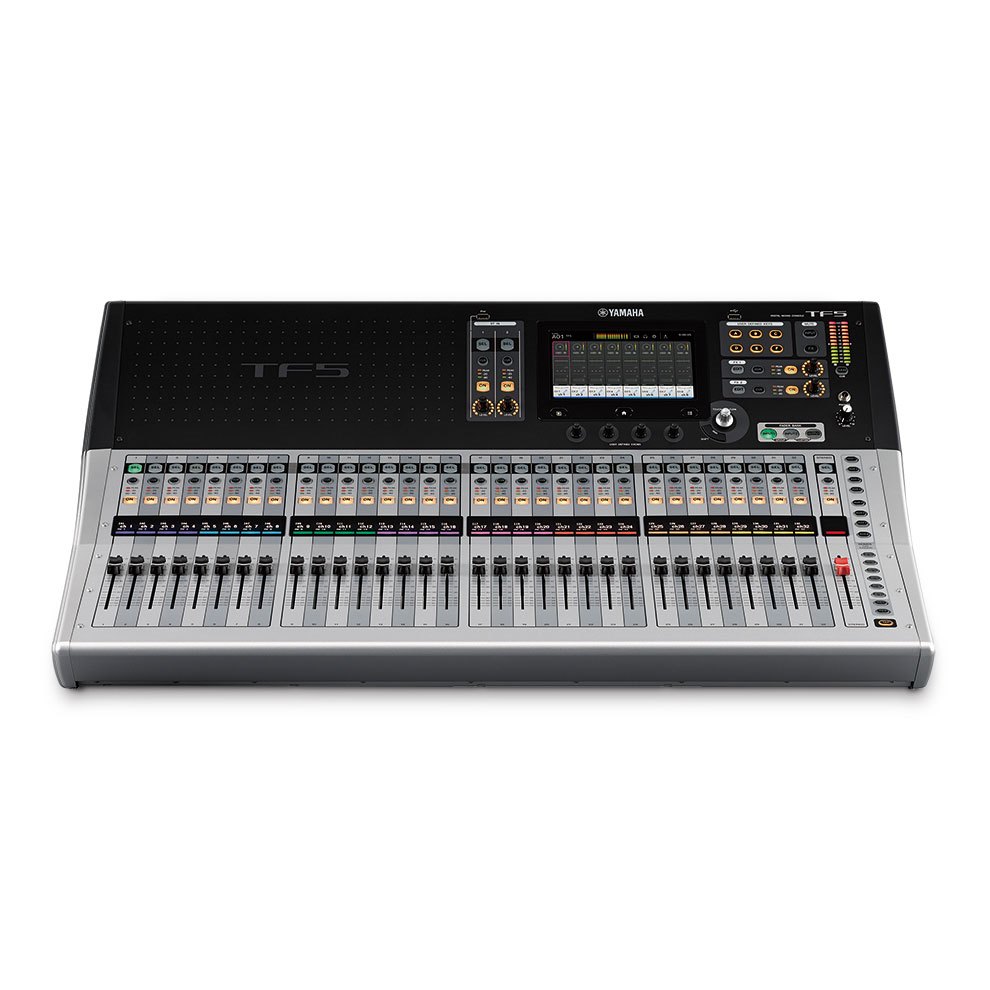
It’s hard to keep up with Yamaha these days. The company has been active across the entire range of its vast console lines. There’s been the introduction of the flagship PM10 and PM7, the establishment of the QL and CL Series (with recent 5.0 version update) as something of a standard in the mid-market rental and install markets; advanced software and plug-in integration with Rupert Neve Designs and Dan Dugan; and stage boxes, connectivity and amp improvements everywhere. The compact and popular TF Series is now on V.3.5, adding the company’s advanced touch-panel based TouchFlow Operation interface to go with the addition of the acclaimed Dugan Speech System automixing capability, an innovative automatic microphone-mixing algorithm for dealing with multiple live mics and unpredictable dialog.
Want more stories like this? Subscribe to our newsletter and get it delivered right to your inbox.

